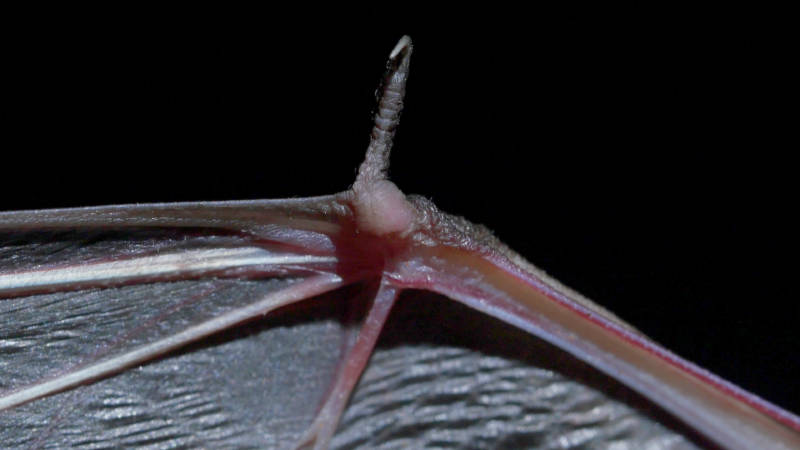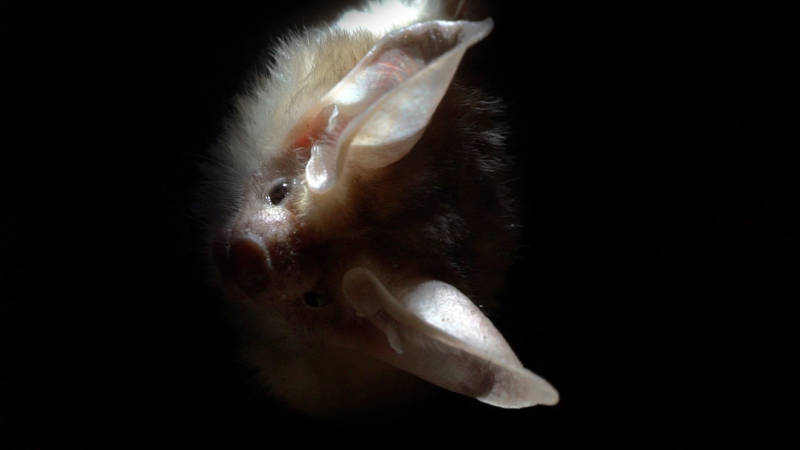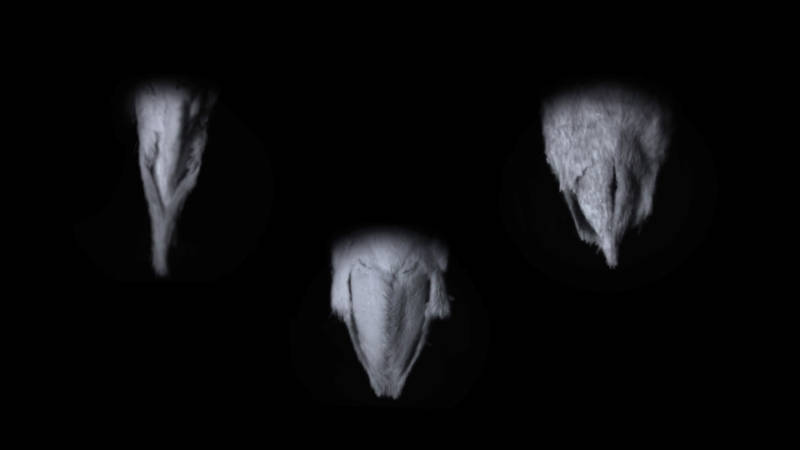These Whispering, Walking Bats Are Onto Something
It’s October. Seen any bats yet?
If you plan on going to a costume party or out trick-or-treating this year, you will. Vampire bats are everywhere during Halloween. But unlike so many other other icons of our spookiest holiday, vampire bats are not all make-believe. They definitely exist, and they do feed on blood. In parts of Latin America, they regularly prey on calves, pigs, and even children.
(Deep Look’s friends at NPR’s Skunk Bear visited the front lines of bat-human interaction in Panama.)

Luckily, only three of the more than 950 species of bats worldwide are exclusive “hemovores” (blood-eaters). Most bats are harmless, even helpful, to humans. Only one, the common vampire bat, seems to prefer mammals.
Vampire bats are unusual, even among bats, for more than just what they eat. They’re also unusual for how they find their food.
Bats have been the only flying mammals for about 50 million years, and most species, with the exception of the fruit bats, use echolocation, their built-in sonar, to detect prey and snatch it from the air.

But vampire bats don’t use their sonar to hunt like that. Instead, they use it only to find their way in the dark. On the hunt, they stalk victims with another sense: hearing.
When vampire bats pick up on a potential victim’s breathing with their super-sensitive ears, they land nearby to scout out a blood vessel.
“They are very good on the ground,” said Khaleel Razak, a neuropsychologist who studies bat sensory patterns at the University of California, Riverside. “Once they get close, the vampires use heat sensors near their noses to detect blood vessels near the surface.”
Collectively, bat species that employ their in-born sonar for navigation more than for hunting are called “whispering bats,” because the wayfinding echolocation is much quieter.
No echolocation is in the human hearing range – it’s too high pitched – but to animals that can hear it, bat hunting signals can be as loud as a plane taking off. The navigation variety is more like a dishwasher.

The pallid bat – one of these quieter, whispering species – is common throughout the West. They hunt insects and arachnids that live on the ground from the air. Just as the vampire bat’s ears are highly attuned to the sound of mammals breathing, the pallid bat can track the soft, low-pitched sounds of scorpions and crickets as they rustle in the earth.
Like vampires, pallid bats land in the final moments of their attack, when they pluck their prey from the ground, a behavior called gleaning.
According to Razak, the species still has the capacity to hunt with sonar and take prey from the air. “It just prefers not to,” he said of the ability.
It took millions of years for bats to develop the lethal pairing of flight and echolocation. Why would a bat “go back” to a more primitive hunting style?

Many scientists, including Razak and Jesse Barber, who studies the predatory habits of bats at Boise State University, believe the answer may have less to do with the bats alone than with moths, their principal food.
In what these scientists describe as an “arms race” of evolution, many moth species have adapted to hear when they’re being tracked and to deploy counter-measures to bat echolocation. “Moths were caught with their pants down,” said Barber, “and had to figure out a way to hear the bats coming.”
Two types of evasions predominate among moths. The hawk moth family can jam bat sonar by emitting clicks from their genitals. The clicks disrupt the echolocation signal as it returns to the bat, causing the predator to miss its target in the air.
The second approach is a longer game. As caterpillars, tiger moths ingest toxic plants that become embedded in their scales, making them unpalatable to bats. The moths advertise their bitter taste with warning clicks, the auditory equivalent of a warning color, like the red stripe on a venomous snake.

“Bats do listen, and they change their behavior when they hear these sounds,” said Nick Dowdy, a post-doc at the Milwaukee Public Museum who has conducted numerous experiments on bat-moth interactions at Purdue and Wake Forest Universities.
These developments have driven some bats to seek alternate means of catching a meal – in part by keeping their sonar volume down.
“They discovered that they can drop their echolocation intensity and listen to what else is out there,” said Razak, describing one possible model for the pallid bat’s evolutionary development. “It gives them a new niche to occupy.”
For the pallid bat, part of occupying that niche has also meant evolving immunity to scorpion venom, according to a paper recently published by Razak and Bradley Hopp. Another arms race.
Between whispering, gleaning, echolocation and flight, the great variety of bats make their living with a combination of techniques. The question now for scientists is which developments came first, and what’s currently driving evolutionary change.
From the standpoint of neuroscience, bats’ highly complex auditory toolkit makes them an excellent research subject to study hearing, with potential long-term applications for understanding human hearing loss.
“We have a bat whose life depends on recognizing very soft sounds and localizing them precisely,” Razak said, “and studies of animals can provide us insights into mechanisms in humans.”